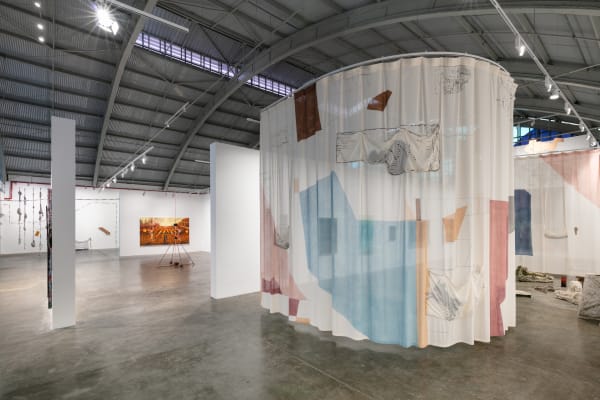The process of making something always involves a human act. Then, what I want to know is whether an intention or an idea that you have before you undertake an action is attached to the resulting thing. Do ideas always adhere to things? When we look at it from the end result, it must transcend your method—that is, it must deviate from your intention or idea, to clarify the essential state of mono as they exist. Am I wrong? – Kishio Suga
-
 Progression Toward Extremity, 2015
Progression Toward Extremity, 2015 -
 Cyclical Progression, 2013
Cyclical Progression, 2013 -
 Site of Components, 2013
Site of Components, 2013 -
 Elapsing Scene, 2011
Elapsing Scene, 2011 -
 Latent Condition, 2011
Latent Condition, 2011 -
 Edges of Connectivity, 2010
Edges of Connectivity, 2010 -
 Accumulation on Fragmented Topography, 2009
Accumulation on Fragmented Topography, 2009 -
 Continuous Earth Under Rain, 2009
Continuous Earth Under Rain, 2009 -
 Elapsing Distances, Connected Points, 2009
Elapsing Distances, Connected Points, 2009 -
 Flowing Against Topographic Lines, 2009
Flowing Against Topographic Lines, 2009 -
 Interstices, 2009
Interstices, 2009 -
 Differentiation, 2008
Differentiation, 2008 -
 Gathered Elements in Union, 2007
Gathered Elements in Union, 2007 -
 Level Depth, 2005
Level Depth, 2005 -
 Scenic Zones – Duplication and Direction, 1996
Scenic Zones – Duplication and Direction, 1996 -
 Progression of Spatial Alignment, 1979
Progression of Spatial Alignment, 1979 -
 Untitled, 1978
Untitled, 1978 -
 Quantity of Territory, 1976
Quantity of Territory, 1976
-

Kishio Suga Writings: Vol. 1 (1969–1979)
Andrew Maerkle, Ashley Rawlings, and Sen Uesaki. Translated with text by Andrew Maerkle, 2021Hardcover, 264 pagesRead more
Publisher: Skira Editore, Blum & Poe, and Mendes Wood DM
ISBN: 8857245616
Dimensions: 6.5 x 9.45 inches -

Kishio Suga
Jason Farago, 2015Hardback, 88 pagesRead more
Publisher: Blum & Poe
ISBN: 9780986112829
Dimensions: 26.9 x 7.9 x 1.5 cm
Sign up to our newsletter to receive the latest updates about Kishio Suga and the gallery
* denotes required fields
We will process the personal data you have supplied to communicate with you in accordance with our Privacy Policy. You can unsubscribe or change your preferences at any time by clicking the link in our emails.































